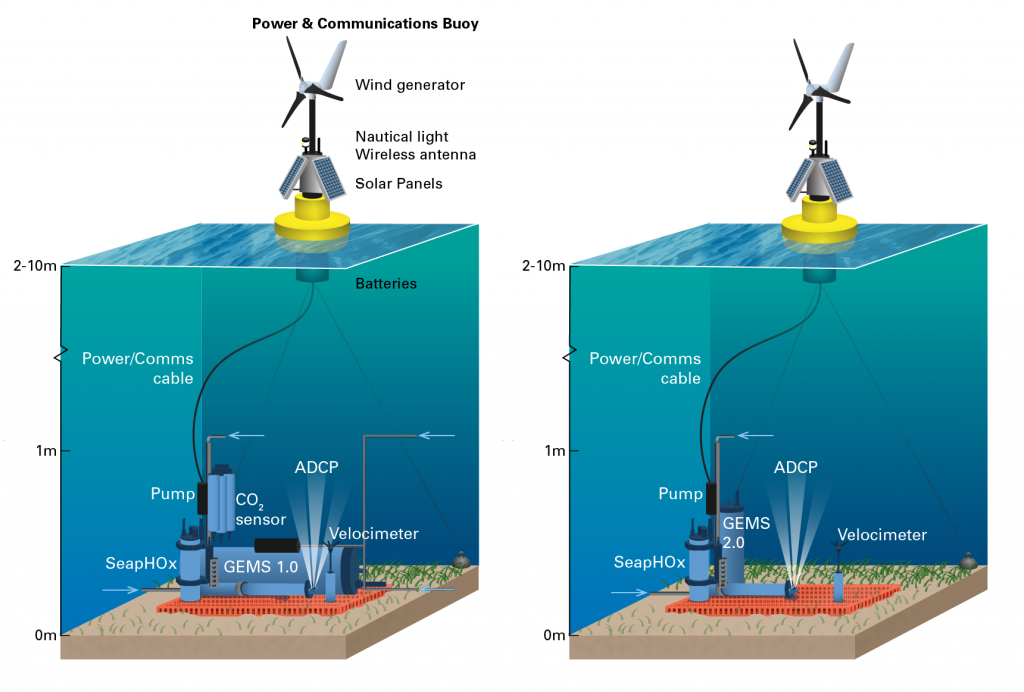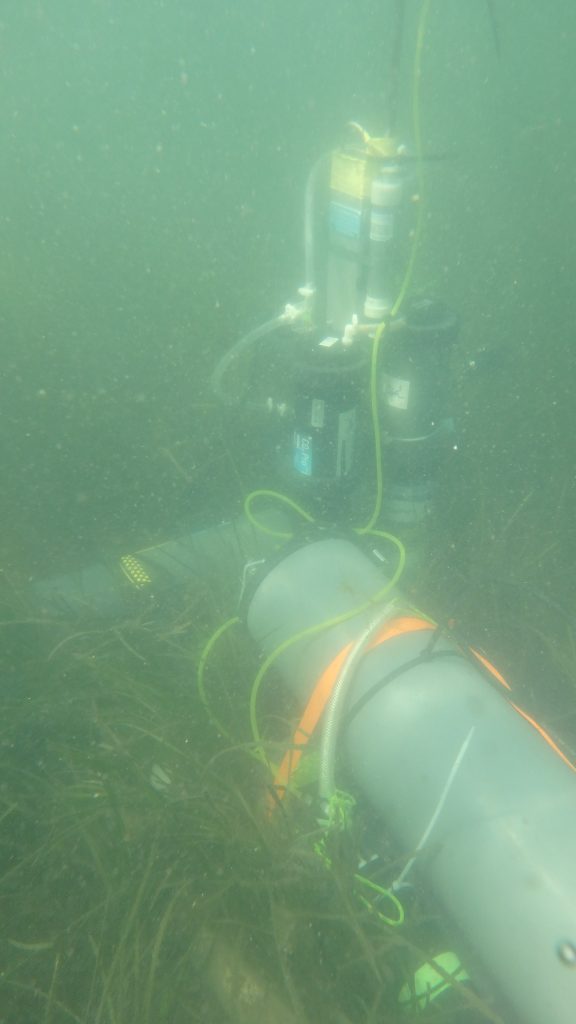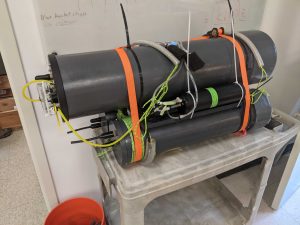Gradient Exchange Mass Spectrometry (GEMS) for Quantifying a Suite of Dissolved Gas Fluxes

Coastal ecosystems are highly active regions of cycling of vital elements, but due to their proximity to human populations, are often significantly impacted by human-induced stresses. The pressure of human activities, directly through pollution or indirectly through temperature and carbon dioxide levels, has created severe water health quality issues worldwide, including nutrient pollution, low oxygen levels and ocean acidification. Here, recent advances in measuring vertical water transport and the vertical distribution of gases dissolved in seawater are combined in a new technological platform to measure the rates of these vital nutrient and element cycles. This Gradient Exchange Mass Spectrometry (GEMS) system uses measurements of the gradient, or vertical distribution, of water mixing and transport, with mass spectrometry measurements of dissolved gases to measure the exchange of vital elements under natural conditions. Deployment of the GEMS system in two coastal locations, one heavily impacted by human activity, and one relatively pristine, will allow real-time assessments of, and comparisons between, natural and polluted coastal ecosystems. The GEMS technology developed through this proposal represents a transformative tool for refining a wide suite of element exchanges that has an unparalleled potential in long-term deployment and application to a variety of important elemental cycles (for example Oxygen, Carbon, Sulfur and Nitrogen). This integrated perspective on multiple, simultaneous processes (e.g. primary production, respiration, nutrient cycling, sulfur cycling, methanogenesis, etc.) is expected to yield novel and significant insights on the dynamics, drivers and interactions of these processes that are unparalleled by any other technique or technology. A major goal of this project is the training of young scientists including two early career scientists and undergraduate students. Undergraduate students will gain technological development and field experience through programs including the Woods Hole Oceanographic Institution Summer Student Fellowship and the diversity-focused Woods Hole Partnership in Education Program. The local monitoring and outreach group, the Buzzards Bay Coalition (BBC), have identified element and nutrient cycles as a major knowledge gap in their understanding of the bay’s health and water quality. This research will examine natural seagrass environments with that of a degraded system and provide specific metrics, data, and results that can be used by the BBC in their education and outreach programs as well as their frequent interactions and advocacy with coastal managers and local governments. Finally, the data communication integrated in the GEMS system allows for a unique opportunity to share our results in real-time via a web interface. This web interface will provide graphical plots of the GEMS data, that continuously update, and be hosted on both the BBC and Woods Hole Oceanographic Institution websites to reach a wider audience.
The sediment-water interface is a region of large physical, biological and chemical gradients, resulting from the dynamic biogeochemical cycling of critical elements between the sediment and the overlying water. Measuring these physical and chemical gradients in the benthic boundary layer allows for the determination of exchange rates of solutes; rates which are fundamental for determining global biogeochemical cycling. This research proposes an innovative technology for the quantification of exchange rates of a suite of biogeochemically relevant volatiles by developing the Gradient Exchange Mass Spectrometry (GEMS) technique. Through targeted improvement of components used in a prototype system and assembly of a second generation system, this project will culminate in a robust, high-endurance, biogeochemical sensing system allowing unprecedented examination of benthic flux dynamics. This system combines two cutting-edge techniques, turbulent boundary layer gradient exchange and the multiple-tracer capabilities of in situ mass spectrometry, thereby allowing undisturbed observation of natural systems while simultaneously quantifying exchange rates of oxygen, carbon dioxide, methane, hydrogen sulfide, and dinitrogen. All components of the proposed GEMS have been independently validated and applied in marine systems, though never in combination. The PIs’ collective experience with turbulent boundary layer exchange and in situ mass spectrometry uniquely poises this collaborative effort to be transformative in the quantification of exchange processes across the benthic-water interface.
This research was funded by the National Science Foundation


